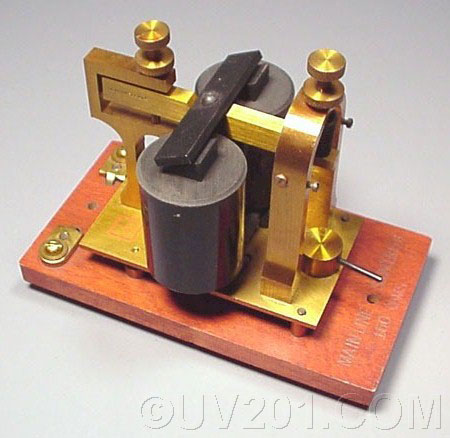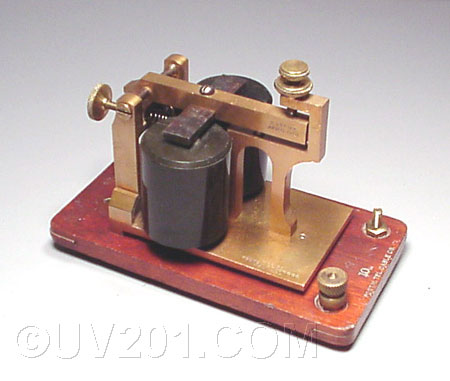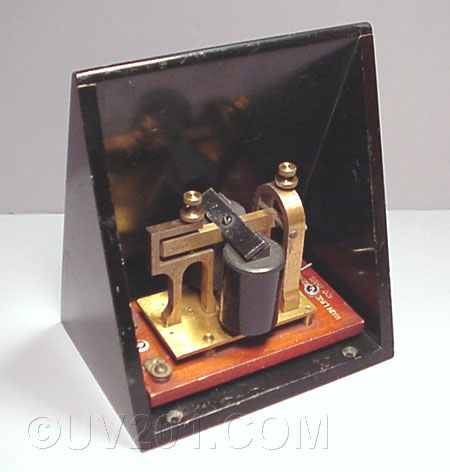| Telegraph Sounders | ||
 |
||
|
Bunnell Main Line Sounder, circa WW-II |
||
| The sounder is a telegraph
instrument that allowed an operator to receive and interpret an incoming
message by its sound.
The sounder consists of a pair of electromagnets which operate a spring-loaded arm that is mounted on pivots. Each closure of the transmitting key at the remote site causes the arm to be drawn towards the magnets producing a distinct clicking sound. A similar sound is produced as the key is opened, as the spring returns the arm to its normal position. The operator was able to differentiate between dots and dashes by the intervals between the clicks. Various adjustments were provided to alter the sensitivity and volume of sound produced. In practice, the sounder was not connected directly to the telegraph line. A sensitive relay was inserted between the line and the sounder to allow a local battery to operate the sounder. |
||
 |
||
|
Foote, Pierson & Company Sounder, circa 1900 |
||
 |
||
| This is a Western Electric type 15B main line sounder mounted in a type 12A resonator, circa 1920. The resonator is a wood enclosure which served to reinforce the sound, and direct it to the operator. These may have been necessary in busy telegraph offices in which a number of sounders would have been operating simultaneously. Many of these resonators were mounted on pedestals to raise them to ear level, though the one shown here appears never to have been used that way. | ||
| Home |